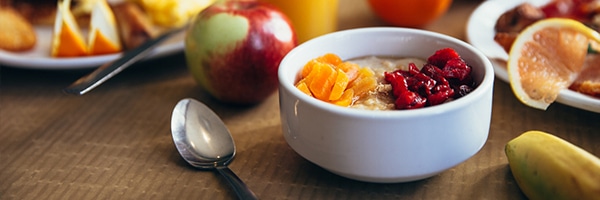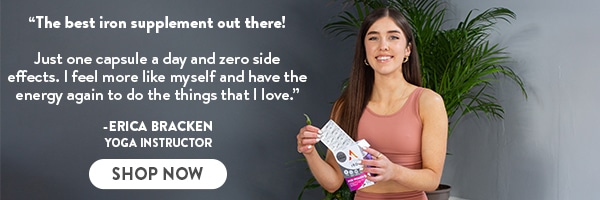Exclusively for activeiron.com by Esther Jane
Iron In A Vegetarian Diet
The health industry is buzzing with plant-based diets, as more and more people are starting to value their wellness.
In fact, according to Irish supermarkets, there has been a steady surge in the sales of vegetables, vegetarian meats, and other plant-based goods.
But despite its increasing popularity, some are understandably hesitant about going plant-based – mainly because of concerns about not consuming enough iron.
While iron is indeed an essential part of any diet, a plant-based diet isn’t actually lacking in this nutrient at all, it’s actually very easy to maintain a high iron intake as a vegetarian, there are plenty of plant-based iron sources that vegetarians can rely on.
That being said, here’s how to maintain your iron intake on a plant-based diet.
Increasing Iron Absorption As A Vegetarian
Avoid Drinking Caffeine
You might want to rethink that cup of tea or coffee you drink with your breakfast meals, since caffeine can block your body from absorbing iron.
Just like our resident writer, Claire O’Brien has previously discussed, these drinks inhibit your body’s iron absorption since they contain tannin – a compound that interferes with our body’s iron absorption.
This is why it’s best to avoid consuming caffeinated drinks during mealtimes so your body can easily take in the iron it needs. But this doesn’t mean you have to completely cut them out of your diet.
If you need that extra energy boost, you can wait an hour after eating your iron-rich meal to drink coffee or tea again.
Incorporate Food High In Vitamin C
If you’re looking to promote your body’s iron absorption process, then be sure that you’re eating a healthy amount of Vitamin C in your plant-based diet. This is because foods rich in Vitamin C aid iron absorption.
On that note, you should consider eating more Vitamin C-rich fruits, such as oranges, strawberries, and kiwi. Not only are they delicious to eat by themselves, but they’re also nutritious ingredients for your smoothies, or as toppings for your porridge.
If you’re looking for Vitamin C food sources that are on the savoury side, vegetables like potatoes and broccoli are also a surprisingly great source of this key vitamin and can help iron absorption.

Iron Rich Foods For Vegetarians And Vegans
The Greener The Better
When going through the produce section at the market or grocery, the colour of your vegetables can guide you on what to buy.
According to a study published in the Nutrients journal, the consumption of dark green leafy vegetables can greatly help the increase of one’s iron intake.
Case in point: dark leafy green veggies, such as kale, spinach, and Swiss chard, all contain at least 2.5mg of iron in each cup cooked.
Aside from being rich sources of iron, adding more of them into your plant-based diet means that you can have more fun (and flavour!) when making your favourite salad recipes or cooking them as a side dish.
Make Rice A Central Part Of Your Diet
While they’re better known as major sources of carbohydrates, rice – brown and red rice in particular – are rich sources of iron.
Although white rice is what often comes to mind when people think of this staple food, brown rice and red rice is equally delicious, nutritious, and easy to prepare. We Know Rice’s cooking guides highlight how today’s rice cookers are more than adept at cooking any kind of rice variant.
This, of course, is in line with the growing desire for more consumers to find healthier ways to consume their favourite meals. You might also find that brown and red rice have a nuttier taste to them, which is a fantastic way to add a little more kick to your meals, and give yourself more energy to power through the day.
Eat More Legumes
When it comes to plant-based diets, legumes are often viewed as side dishes or mere toppings, since veggies and whole grains are the usual stars of the show.
However, eating legumes is equally important in your diet – especially if you want to sustain your intake. True enough, Everyday Health notes that a cup of legumes contains 5mg of iron.
Eating legumes on a daily basis can do a world of good for your iron intake, as the Health Service Executive shares that the recommended iron intake for men is 8.7mg, and 14.8mg for women.
Whether it’s chickpeas, beans, or lentils, these iron powerhouses can be tossed in a hearty bowl of soup or into your salads.

Highest Iron Vegetables
Lots of vegetables are a good source of iron but some foods have a particularly high iron content. Let’s take a look at vegetarian foods high in iron.
-
- Beans and peas
- Lentils
- Nuts and seeds
- Leafy greens
- Potatoes
- Mushrooms
- Palm hearts
Iron For Vegetarians: Conclusion
A plant-based diet can be difficult to maintain, but it can be healthy and rewarding. You don’t have to worry about losing iron intake in your diet as a Vegetarian, because lots of plant-based foods have high iron content.
However, it’s important to be aware of other foods that temporarily stop your body from absorbing iron, like tea and coffee.
If you can’t get enough iron in your diet and you chose to supplement, consider an iron supplement that is suitable for Vegetarians and kind on your system.


